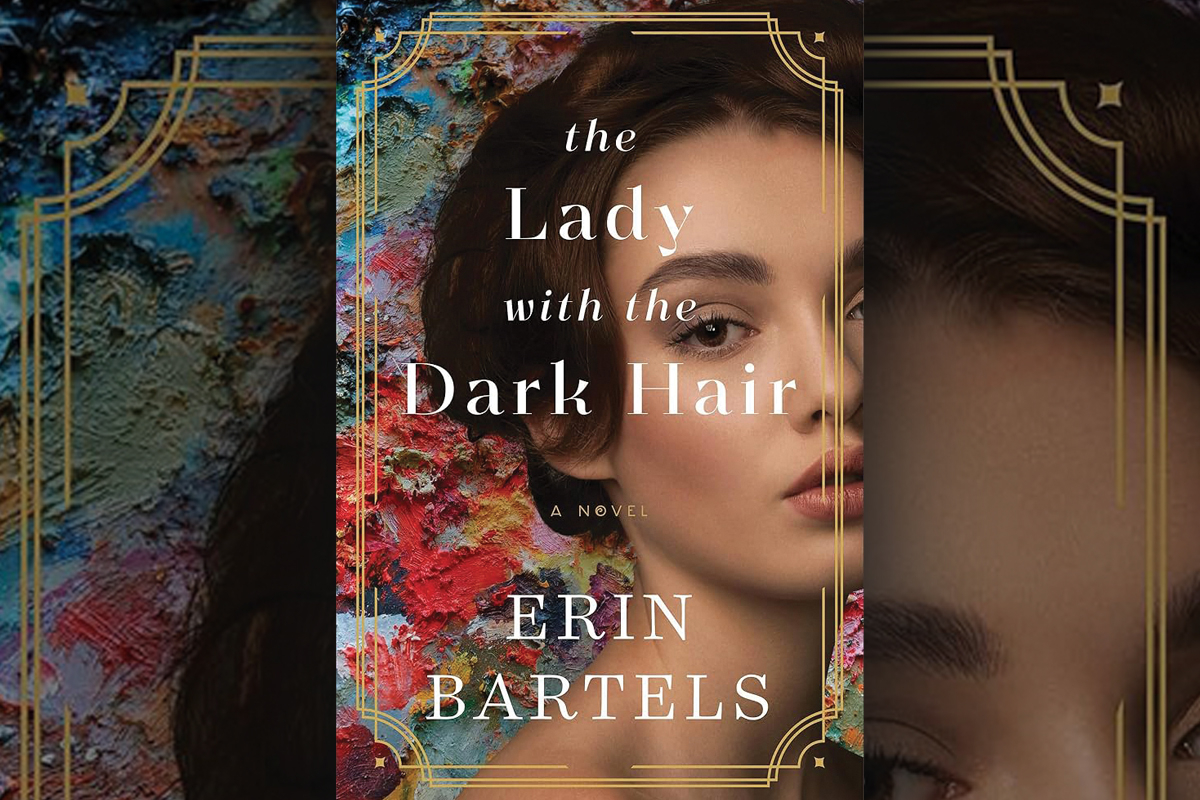A proclamation about women as artists

As I peruse the shelves in the Jackson County Library’s “new releases” section, it is evident to me that there are more new titles written by women than by men. And while this may be true in literary circles in much the same way it is in politics these days, many of the storylines in these books being written by women have to do with a feminine renaissance that is going on world-wide.
Erin Bartels new novel “The Lady With the Dark Hair” (Revell, 2024, 331 pages) is certainly one of these tomes heralding the emergence of feminine equality, if not dominance, into culture and consciousness.
Erin Bartels is an award-winning American author of several novels with themes of reckoning with the past, improving the present, and looking with hope to the future. In “The Lady With the Dark Hair,” the focus is on the world of the visual arts and painters in particular. Bartels’ two main female characters — Viviana Torrens and Ester Markstrom — exist in two different centuries. Viviana in the late 1800s in Toulouse, France and Ester in the present-day in East Lansing, Michigan. So with this intriguing time and space juxtaposition and with Bartels’ intellecutally and emotionally flamboyant writing style, not only do we get a double-entendre storyline spanning more than two centuries, but we get the creative perspective from four different artists of different sexes and timeframes in their development and from the same artistic gene pool. There are also perspectives from characters who are: an arts scholar, an arts critic, and an arts dealer and gallery owner. In this sense, Bartels has captured the art world from almost every angle, including gallery visitors and prospective art collectors.
“The Lady With the Dark Hair” is the title of a painting that is attributed to a French painter named Francisco Vella that focuses on the model at the center of one of his most admired paintings. In the book’s frontmatter and a quote by the well-known 18th century philosopher, writer and composer Jean Jacques Rosseau, we get a hint at where Bartels is going with this story: “Women in general love no art, know nothing about any form of art, and have no genius.” From the early placement of this quote and others like it at the front of the book, we understand that Bartels has written a book to refute these macho claims, if not make of them a mockery. And so, off we go on this transcontinental artistic journey over time and space that is part romance, part art history, and part feminist memoir, from inside the mindset of our two main characters of Viviana and Ester and what amounts to a ‘who done it’ in the art world and the mystery of a French artist ancestor and his young female student’s paintings.
In the 1880s, Viviana, who began as his maid, has become a student and love interest of Francisco Vella in France. Over the course of the story she travels with him across Europe and eventually to Gibraltar, in Spain. Ester, the gallery owner and the major representative of Vella’s artwork and who lives in present-day Michigan, is a proclaimed descendant of Vella. She travels to Paris to track down one of his paintings and also ends up in Gibraltar, with Bartels weaving a creative time-space scarf of the lives of these two women. Ester is middle-aged and naive related to relationships, especially with men, with little or no experience in that arena, but has become fascinated with her former art professor, a Dr. Adam Perez. Viviana, on the other hand, is young and is a quick study and wise beyond her years, but is in the thralls of Vella and his ambitious escapades throughout Europe. But she eventually tires of his shenanigans and sets off on her own with the help of an admirer named Oscar de la Paz.
As time and distance unravel, so does the story of these two women become more complex and mysterious as revelations occur that shed new light onto the question of which paintings were created by whom. Ester is asking the question: “Who is this woman with the dark hair who showed up in Vella’s writings and in so many of his paintings. Who was Viviana Torrens? At this point “The Lady With the Dark Hair” becomes a kind of detective story with both Viviana and Ester both ending up in Gibraltar, Spain, and headed for America in seeming parallel universes, albeit in different centuries. Viviana departs with a blank canvas and paints, Ester with a painting that is considered Vella’s self-portrait.
Related Items
From here we get Bartels’ focus on the creative feminine in spades, starting with quotes like “She thought of the antelope and the bison racing across the ceiling of that cave in the Pyrenees. How much more permanent art was than power. How much more constant it was than a kingdom. How much more expansive than an empire.” In the end, Viviana wants “to make her own way in the world. To live on her own terms and to see the world through her own eyes and to show others what she saw through her paintings.” Or, as she says: “Shouldn’t I use every moment I have to do what I’m passionate about? Any woman can raise a family. Not every woman can paint. They are distracted by a crying baby or something burning in the kitchen. They are not noticing the things I am noticing.”
And then Bartels unveils the mystery of the origins of the paintings presented in the book in this spoiler alert: “It wasn’t simply that a forgotten artist had been rediscovered. It wasn’t simply that a body of work that had been mis-attributed to a man had finally been properly identified as the work of a woman.” And there we have it. But then Bartels tie a ribbon at the end of the book in the Author’s Notes writing: “I’d like to thank the many female artists over the centuries who have striven to create despite tremendous restrictions, opposition, and condescension. Your fiercely independent spirit and your tenacity in the face of so many obstacles inspire me. You are my muses.”
(Thomas Crowe is a regular contributor to The Smoky Mountain News and author of the multi-award-winning non-fiction nature memoir “Zoro’s Field: My Life in the Appalachian Woods.” This email address is being protected from spambots. You need JavaScript enabled to view it..)

















